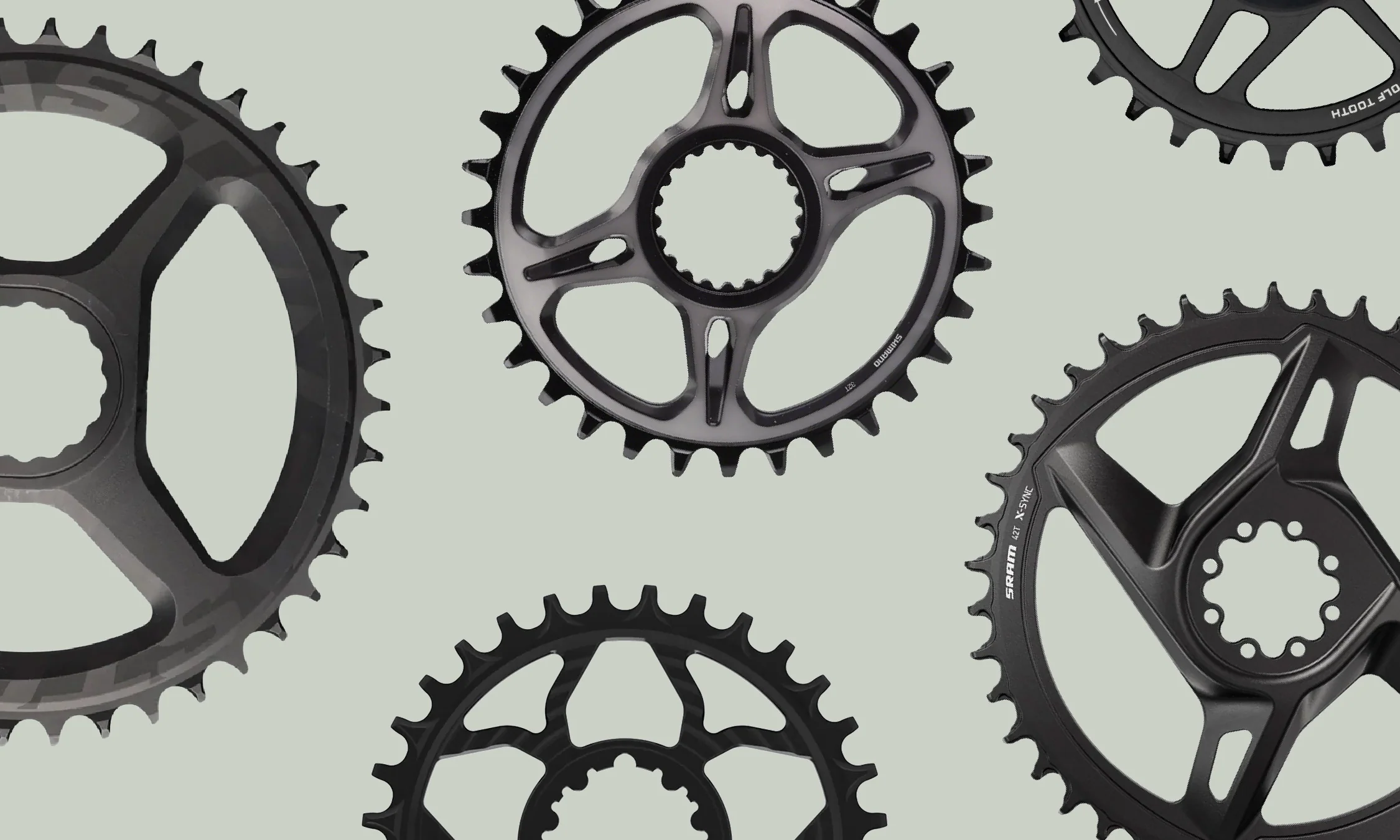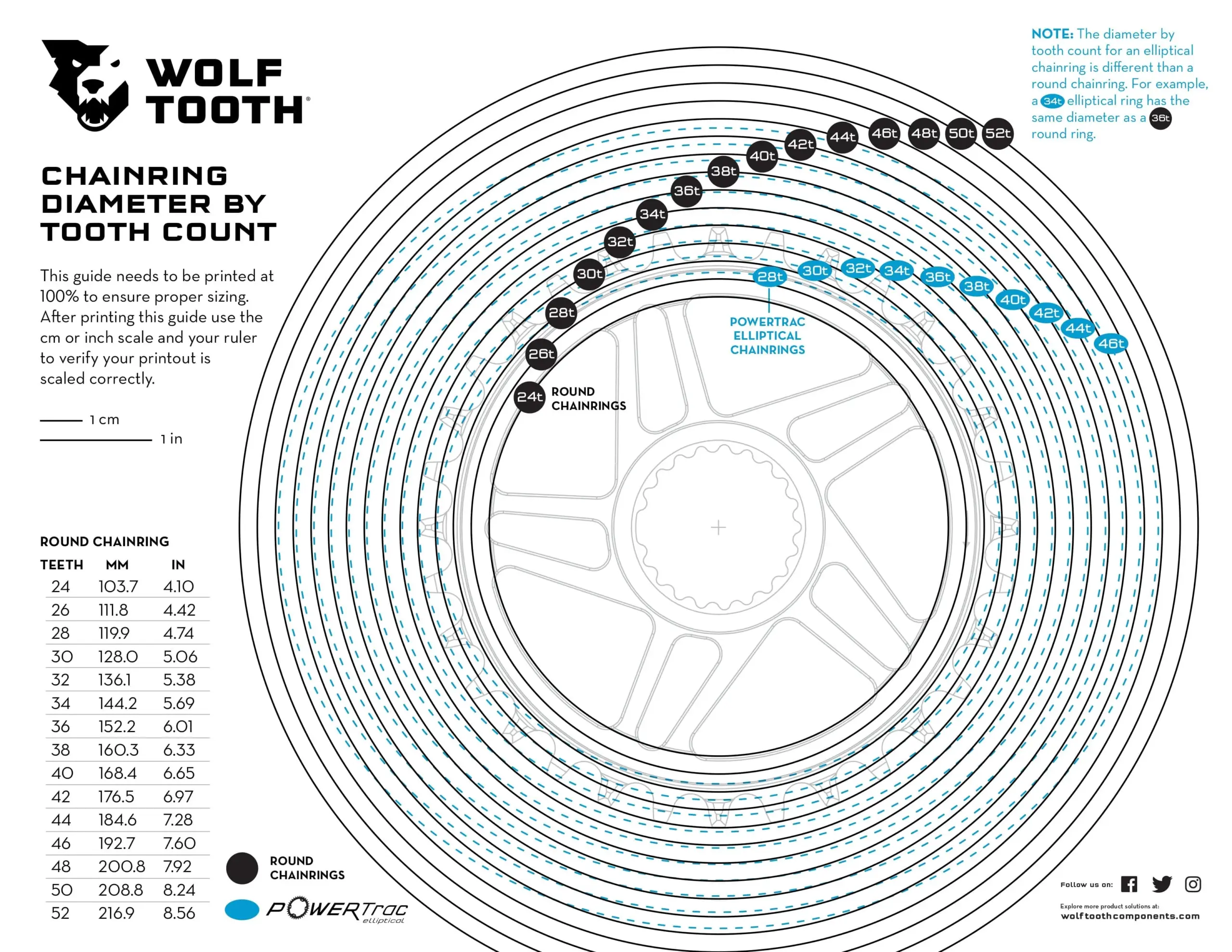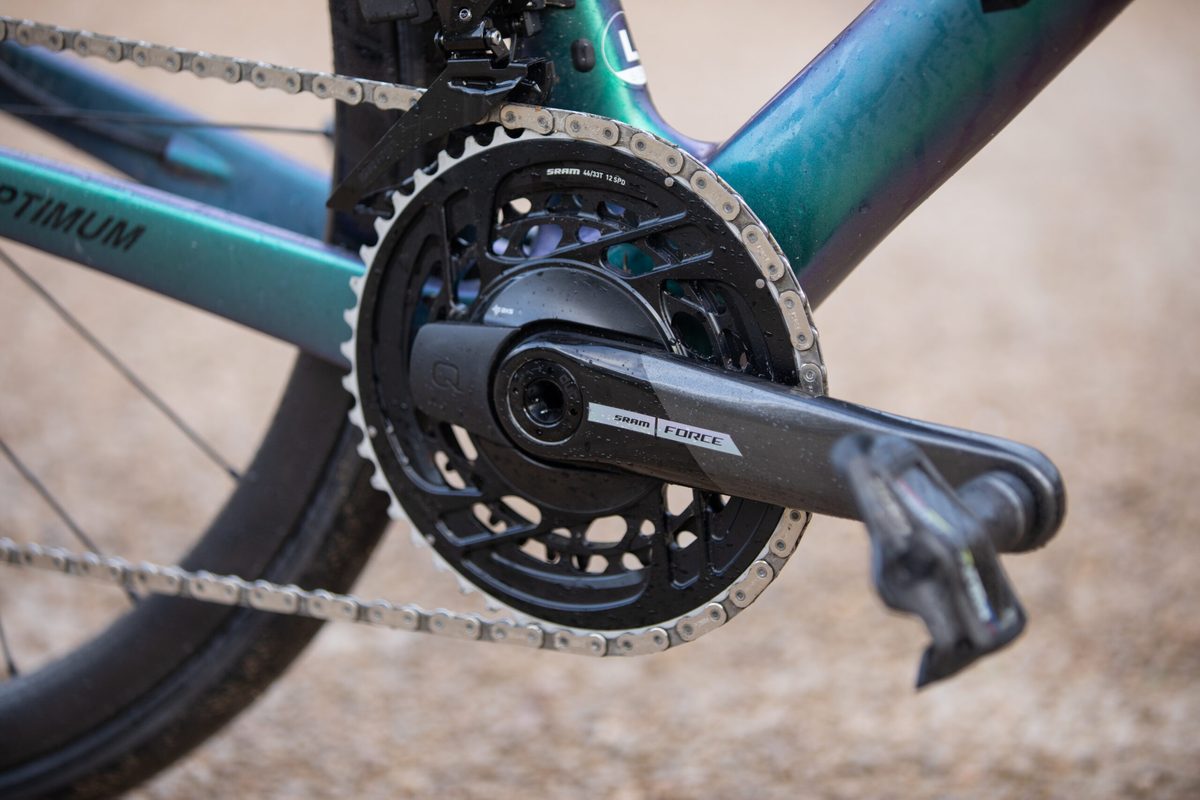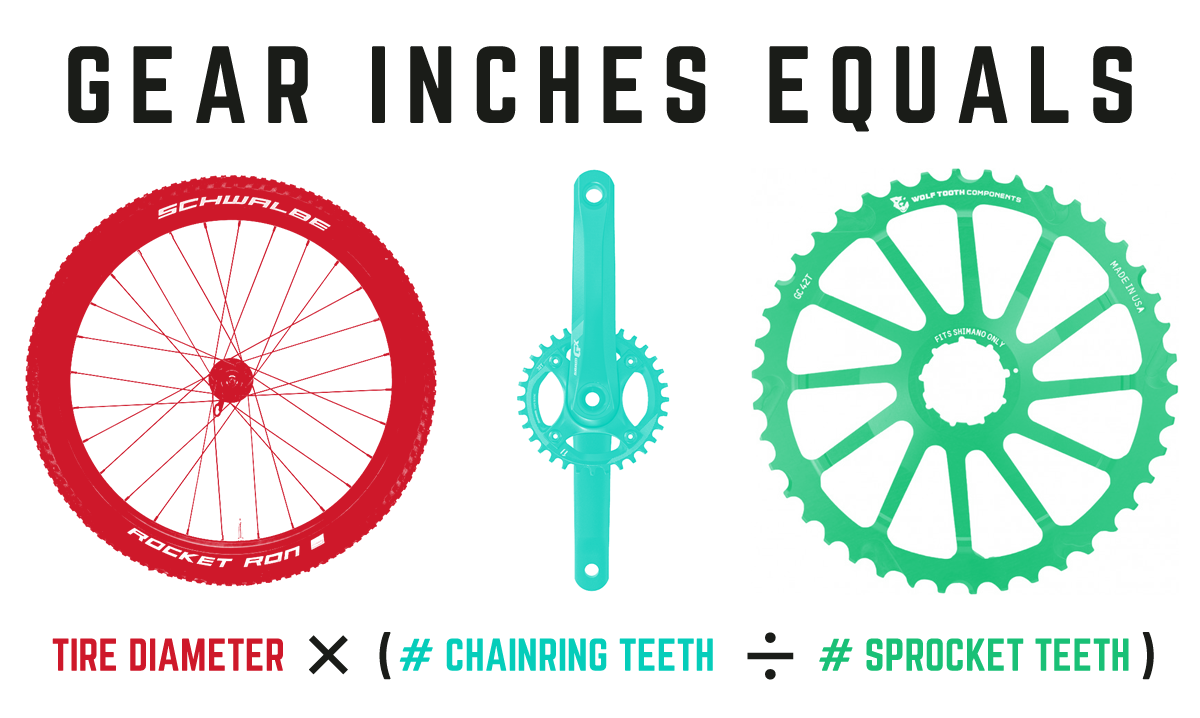Updated: 3rd August 2025
So you want a larger or maybe smaller sized chainring? Whether you’re looking to tackle those rather steep hills easier or optimize your bike for different terrain, this comprehensive guide will help you understand the complexities of chainring sizes and make the right decision for your current bike setup.
I’m writing this partly because I’m on my own journey to find the perfect chainring for my gravel bike. Like many of you, I’ve struggled on climbs and found myself wondering if there’s a better setup out there. Through research, real-world testing, and some trial and error, I’ve learned what you need to know to make an informed decision.
Can I Change My Chainring Size?

Yes, you can change your chainring size, but you cannot just swap your current chainring for something that doesn’t work with your current setup. The new chainring you get for your bike needs to work with your current crankset. Your cranks will have a specific bolt layout or fitment specification that must be matched.
As your chainring wears down from use over time, you’ll eventually need to replace it anyway when the teeth show signs of heavy use. This is actually the perfect opportunity to consider a different size that better suits your riding.
Things to Consider When Changing Chainrings

You need to make sure several compatibility factors align:
- Speed compatibility: If you’re running a 1×11 speed setup, get a chainring designed for that system
- Bolt pattern: The number of chainring bolts must match (4-bolt chainrings can only be replaced by 4-bolt chainrings)
- BCD (Bolt Circle Diameter): This measurement must be identical between old and new chainrings
- Derailleur adjustment: If you have a front derailleur, it may require adjustment to move up or down depending on the new chainring size
But how do you come to the conclusion of what chainring size you actually need?
Understanding the Difference Between Chainring Sizes

The difference between chainring sizes is measured in teeth, and it’s more significant than many riders realize. Here’s how different sizes affect your ride:
Small Chainrings (28-34 teeth)
These are your climbing specialists. A 28t chainring will feel much lighter and have less resistance when pedaling, especially on climbs. You’ll travel less distance per pedal stroke, but you’ll be able to maintain a higher cadence and tackle steeper grades without getting off the bike.
Medium Chainrings (36-42 teeth)
This is the sweet spot for many riders. Take my own experience with the Kinn Sutra LTD that came stock with a RaceFace Aeffect 36t crankset. When I rode the Victoria Divide over Mt Buller, I really struggled at times climbing the steep sections with my bikepacking gear. The 36 teeth was too large a chainring for that ride when combined with my fitness level and the load I was carrying.
Large Chainrings (44-56 teeth)
These require more effort to spin but will take you farther and faster per pedal revolution. If you like pushing the big gears rather than spinning quickly, larger chainrings might suit your style.
How to Choose Your Chainring Size

Now it gets rather challenging for me to tell you exactly what chainring size and gear ratio will work best for you, but I’ll try my best to help describe how these chainring variations impact your ride.
Consider Your Type of Riding
Different types of riding result in different terrain demands and impact on overall performance:
Bike Touring with Heavy Loads: Are you bike touring with 4 fully loaded panniers weighing your bike down, planning to ride steep climbs with lots of altitude gain? You’ll need a variety of options and something that can give you a rather low “granny gear” to get that heavy bike up the hills.
Mountain Biking and Gravel: Figuring out what type of trails you plan to ride for MTB and gravel bikes is important. If you’re riding up long climbs, you’ll be better off with a smaller chainring.
Road Cycling: If you’re road cycling and riding in mostly flat areas with short, steep climbs, it’s recommended that a larger chainring is best.
Your Preferred Cadence Matters
What type of cadence do you prefer to ride? Is your preferred cadence high or low? Do you like spinning your legs in faster rotation or more of a slower, harder push?
If you like spinning quick, then a smaller chainring will get you spinning the cranks like you want. But if you like pushing the big gears, go for a larger chainring.
Consider Your Fitness Level Combined with Terrain
I like to consider myself very fit, but maybe the 36t chainring on my Sutra just was too big for the terrain I was tackling. This is partly why I’m writing this article – so I can figure out what chainring size I should get next for my bike. Maybe a chainring size like 34t or even 32t might be what I need.
The Science Behind Chainring Performance: Gear Ratios and Gear Inches

You also want to consider your bike’s current cassette numbers and figure out what ratio is ideal for your type of riding. This is the comparison between the front chainring and a given rear cog.
Calculating Gear Ratios
The gear ratio is calculated by dividing the teeth of the chainring by the teeth of the cog on the cassette. Using my bike as an example (with a 10-42t cassette), let’s work through the math:
Current setup with 36t chainring:
- Lowest gear ratio: 36/42 = 0.857
- Highest gear ratio: 36/10 = 3.600
Cassette range calculation: You work out the gear range of the cassette by dividing the biggest cog by the smallest. For my 10-42t cassette: 42/10 = 4.2 = 420% range.
Real-World Comparison: Learning from Other Bikes
Let me share a practical example of how I use this information. Someone I know has a Kona Unit X (Mountain/Cross-country bike) and is able to climb the same very steep hills with ease that I struggle on. By comparing our gear ratios, I can figure out what chainring would help me achieve similar climbing performance.
Kona Unit X gearing:
- Lowest gear ratio: 32/50 = 0.640
- Highest gear ratio: 32/11 = 2.909
My Sutra (stock):
- Lowest gear ratio: 36/42 = 0.857
- Highest gear ratio: 36/10 = 3.600
As you can see, my Sutra at stock has more gearing to ride downhill (higher top gear), while the Unit X would spin out more on road descents. But the Unit X takes the cake with a lower number for climbing easier up steep hills – and this is where I want to get my Sutra.
Testing different chainring options for my Sutra:
If I were to get a 28t chainring:
- Lowest gear: 28/42 = 0.667
- Highest gear: 28/10 = 2.800
This gets fairly close to the Unit X for climbing ability. But my only concern with this small a chainring is the spinning out that I can see happening on steep road downhills. So I might want to go for something around 30t, 32t, or 34t instead.
You can see that if you play around with these numbers, you can find an ideal range for you. It’s a good idea to compare to other bikes and how well they perform for the type of climbing you have in mind.
Understanding Gear Inches

Gear inches provide another traditional way to understand gearing, calculated as: (Chainring teeth ÷ Cassette cog teeth) × Wheel diameter in inches
For a 700c wheel (approximately 27 inches):
- Low gear (easy climbing): 20-30 gear inches
- Medium gear (general riding): 50-70 gear inches
- High gear (speed): 100+ gear inches
Ideal Climbing Ratios
For a lower gear suitable for gravel bikes, you should aim for something in the range of 1:1. This means combinations like 42:42, 34:34, etc. If you go much lower, traction and balance can become issues.
From my research, it seems people are saying something like 0.610 is around the ideal ratio for serious climbing, though this depends on your wheel size and grade of climbs. Back to my bike example – if I want to achieve this ratio or close to it, I would need the 28t chainring to get a 0.667 ratio for climbing.
Is a Bigger Chainring Better?
Whether a bigger chainring is better depends entirely on your riding style and terrain, but let me break down the real-world implications:
Advantages of Larger Chainrings:
Put simply, the larger the ring, the more pushing required, which results in faster speed when the rotations are maintained. You’ll travel farther and faster per pedal stroke with a larger chainring.
Disadvantages of Larger Chainrings:
A larger chainring will feel harder to pedal against and have stronger resistance when pedaling, especially on climbs. This requires more leg strength and can lead to earlier fatigue.
The key is finding the balance between having enough top-end speed for descents and flats, while still being able to tackle your regular climbs without walking.
Is a 42t Chainring Good for Climbing?
A 42t chainring can work for climbing, but its effectiveness depends heavily on your cassette and riding conditions. Let me give you some real-world context:
With Different Cassettes:
- 42t + 11-32t cassette: Lowest ratio 1.31 (moderate climbing capability)
- 42t + 10-42t cassette: Lowest ratio 1.00 (good climbing capability)
- 42t + 11-46t cassette: Lowest ratio 0.91 (very good climbing capability)
Based on my experience struggling with a 36t on loaded climbs, a 42t would be even more challenging unless you’re a strong rider on less demanding terrain or have a wide-range cassette to compensate.
Chainring Offset: Do I Need 3mm or 6mm?
Chainring offset (also called chainline) affects how your chain aligns across the cassette – this is more technical but important for proper function:
3mm Offset Chainrings:
- Creates a more inward chainline
- Often used with road groupsets and narrower cassettes
- Better for traditional road bike setups
6mm Offset Chainrings:
- Creates a straighter chainline to the center of wide cassettes
- Standard for most modern 1x mountain bike setups
- Necessary for proper function with wide-range MTB cassettes
Important: Using the wrong offset can cause poor shifting, increased wear, and annoying chain noise. When in doubt, check your bike’s specifications or consult a mechanic.
How Does Chainring Size Affect Speed?
Let me give you a practical example using that hypothetical 28t chainring for my bike. If I were to get a 28t chainring, it would definitely affect my downhill speed – I’d spin out much earlier on descents.
However, it would increase my efficiency and ultimately my speed and ability to climb better, especially on really steep stuff where I’d otherwise be walking. The smaller chainring means faster spinning, resulting in slower top speeds but much better climbing capability.
The number of teeth in the chainring determines the output you create in moving the bike forward while you pedal. A 28t chainring will feel lighter with less resistance, while a 36t chainring will feel harder to pedal with stronger resistance, especially on climbs. The trade-off is that you’ll travel farther and faster per pedal stroke with the 36t, but it requires much more effort to spin.
Choosing the Right Chainring Size for Different Bike Types
Road Bikes
- Racing/Performance: 50-52t (with 34t small ring for compact)
- Recreational/Climbing: 46-50t (with 34t small ring)
- Touring: 44-48t (with 28-32t small ring)
Mountain Bikes (1x Systems)
- Cross-Country: 32-34t
- Trail/All-Mountain: 30-32t
- Enduro/Downhill: 28-30t
Gravel/Adventure Bikes
- Fast Gravel: 40-42t
- Mixed Terrain: 38-40t
- Loaded Touring: 36-38t (or smaller based on my experience!)
Best Chainring Sizes for Popular Setups
1×12 Systems:
- Aggressive climbing: 30t with 10-52t cassette
- Balanced performance: 32t with 10-52t cassette
- Speed-focused: 34t with 10-52t cassette
1×10 Systems:
- Mountain biking: 30t with 11-46t cassette
- Gravel riding: 38t with 11-42t cassette
- Road riding: 42t with 11-36t cassette
Step-by-Step Guide: How I Choose Chainring Sizes
Based on my own experience and research, here’s the process I use:
1. Honestly Assess Your Riding and Fitness
Don’t overestimate your fitness or underestimate your local terrain. I learned this the hard way on Mt Buller!
2. Calculate Your Current Gear Ratios
Use the formulas I showed earlier to understand what you currently have, then figure out what you actually need.
3. Compare with Similar Riders/Bikes
Look at what riders with similar fitness and terrain challenges are using successfully.
4. Consider Your Priorities
- Climbing priority: Choose smaller chainrings (28-34t)
- Speed priority: Choose larger chainrings (42-52t)
- Balanced riding: Choose medium chainrings (36-42t)
5. Check Compatibility
- Match your crankset’s bolt pattern and BCD
- Ensure proper chainline/offset for your bike
- Verify your derailleur can handle the range
6. Plan for Compromises
There’s no perfect chainring size – every choice involves trade-offs. Decide which compromises you can live with.
Oval Chainrings vs Round: Worth Considering?
I mentioned oval chainrings briefly in my original thoughts, and they’re worth exploring. Oval chainrings potentially provide greater pedaling efficiency by varying the effective gear ratio throughout your pedal stroke.
In theory, they help you make the most of your limited power output, allowing you to pedal more efficiently while providing smoother power delivery to the rear wheel. A round chainring results in an uneven pedal stroke, making your cadence jerky and irregular. Surprisingly, an oval chainring can smooth this out, which also increases your overall traction thanks to the more consistent torque delivery.
However, they’re not for everyone, and the benefits are debated. If you’re considering them, try to test ride before buying.
Common Mistakes I’ve Seen (and Made)
1. Copying Someone Else’s Setup Blindly
Just because it works for your riding buddy doesn’t mean it’ll work for you. Consider your unique fitness, riding style, and local terrain.
2. Ignoring the Cassette
The chainring is only half the equation. Your cassette range dramatically affects what chainring size will work best.
3. Focusing Only on Climbing
While climbing ability is crucial (trust me, I learned this on Mt Buller), don’t sacrifice so much top-end that you can’t enjoy descents or flat sections.
4. Not Testing Before Committing
If possible, try different setups before buying. Some bike shops will let you test ride different configurations.
My Personal Decision Process
Getting back to my own situation with the Sutra – after doing all this research and math, I’m leaning toward a 32t or 34t chainring. This would give me:
With 32t chainring:
- Lowest gear: 32/42 = 0.762 (much better for loaded climbing)
- Highest gear: 32/10 = 3.200 (still adequate for most descents)
This seems like the sweet spot for my mixed terrain riding with occasional bikepacking loads.
What Is The Best Chainring Size?
The best chainring size really depends on what trails and terrain you plan to ride and what type of bike you have. I cannot promise an ideal chainring size because everyone is different, but I can give you the tools and framework to make your own informed decision.
As I’ve discovered through this research, the chainring size is not the end-all-be-all. You need to convert the numbers and figure out the gear ratios so you’re comparing apples with apples. Also remember that wheel size affects your overall bike performance and gear ratios too.
If you want to play around with numbers and potential chainring sizes to see what speeds you can expect for each gear, I suggest using an online bike gears calculator to test different combinations.
The question makes more sense when we ask: “What is the best gear ratio for my type of riding?” From my research, something around 0.610 seems to be the ideal ratio for serious climbing, though this depends on your wheel size and the grade of climbs you face.
The ideal chainring size depends on your unique combination of riding style, terrain, fitness level, and performance goals. Through my own journey of struggling on climbs and researching solutions, I’ve learned that there’s no single “best” size – only what’s best for your specific situation.
Start by honestly assessing your needs and calculating your current gear ratios. Compare with similar riders who are successful on terrain like yours. Don’t be afraid to prioritize your biggest challenges – if climbing is where you struggle most, optimize for that even if it means some compromise elsewhere.
Remember that changing your chainring size is one of the most cost-effective ways to dramatically improve your bike’s performance for your specific needs. Take time to do the math, consider your local terrain, and don’t be afraid to experiment within your drivetrain’s compatibility limits.
The perfect chainring size is the one that allows you to ride longer, climb easier, and enjoy your time on the bike more. Use this guide as your foundation, but let your actual riding experience be the final judge of what works best for you.
After all this research for my own bike choice, I’m excited to try a smaller chainring and see how it transforms my climbing experience. Maybe it’ll help you transform yours too.



